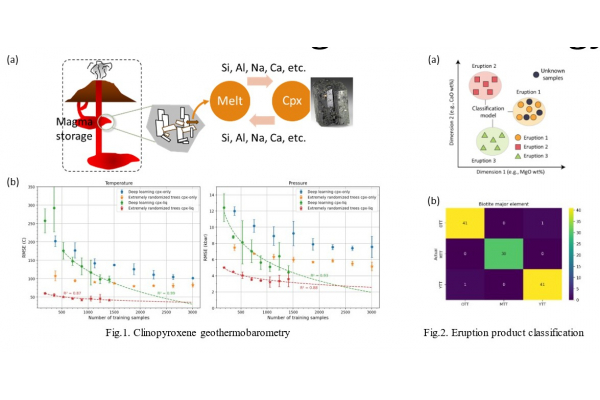MACHINE LEARNING IN VOLCANOLOGY
Seminars
Semester 2
Machine learning (ML) is a powerful tool for identifying patterns in large datasets and has been increasingly applied in geosciences. This study explores its application in volcanology with two foci - clinopyroxene geothermobarometry and eruption product identification – described as follows.
Clinopyroxene geothermobarometry is commonly used to estimate the pressure and temperature conditions of magma storage but is often limited by high uncertainty. With a compilation of 3768 clinopyroxene samples and 1766 equilibrium pairs, we compare machine learning (Random Forest) and deep learning (Neural Networks) approaches. Our results show that deep learning models have larger uncertainties than machine learning models but improve significantly with a larger dataset for clinopyroxene-liquid pairs. By comparing the available deep learning-based model with different machine learning models, we find that the former shows the lowest uncertainty in P but not in T.
Tracing distal tephra deposits based on proximal eruption products helps to reconstruct eruption history. Here we investigate ignimbrites of four very large-to-super eruptions at Toba volcano, Indonesia. We develop high-accuracy (>90%) eruption classification models using biotite, apatite, and amphibole major element compositions. The models outperform conventional glass composition-based approaches. By investigating biotite and apatite from other volcanoes, we find volatiles (F, Cl, S) and Mg in apatite are the common eruption indicators, whereas the indicators in biotite differ between eruptions.
Ongoing work includes (1) reducing uncertainties in deep learning-based clinopyroxene thermobarometers by incorporating thermodynamic constraints, and (2) developing a multiple mineral and glass composition-based machine learning framework for tephra source identification, which will help to re-assess the eruption size-frequency relationship of poorly studied volcanic arcs such as the Sumatra Trench.
Additional information: Miss Xiaoyu LIU, liuxy23@connect.hku.hk










